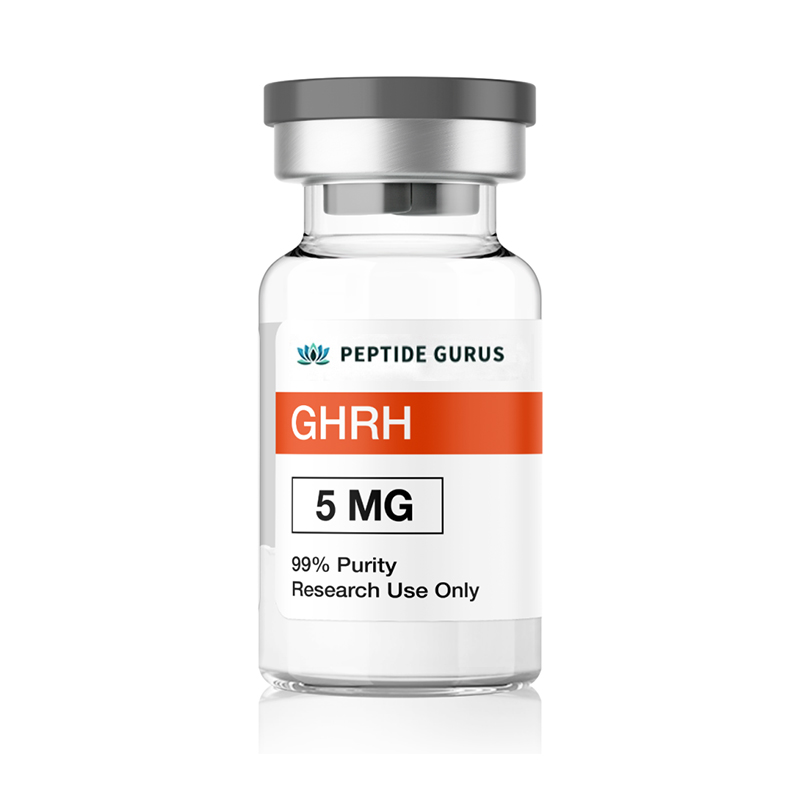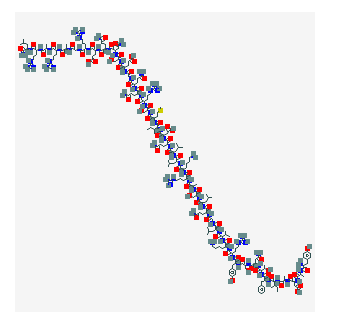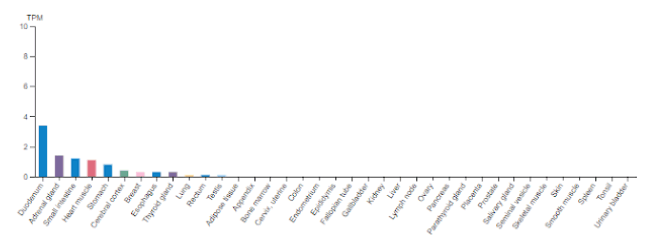



Kategorien:Peptid-Fertigprodukt, Peptide und ihre Dosierungen
Freies (1) 30 ml bakteriostatisches Wasser
mit qualifizierten Bestellungen über$ 500 USD.
(Ausgeschlossene Kapselprodukte, kosmetische Peptide, Promo -Codes und Versand)
Produktnutzung:Dieses Produkt ist nur als Forschungschemikalie gedacht.Diese Bezeichnung ermöglicht die Verwendung von Forschungschemikalien ausschließlich für In -vitro -Tests und Laborversuche. Alle auf dieser Website verfügbaren Produktinformationen dienen nur zu Bildungszwecken. Die körperliche Einführung jeglicher Art in Menschen oder Tiere ist gesetzlich streng verboten. Dieses Produkt sollte nur von lizenzierten, qualifizierten Fachleuten behandelt werden. Dieses Produkt ist keine Droge, Nahrung oder Kosmetik und darf als Medikament, Nahrung oder Kosmetik nicht missbraucht, missbraucht oder missbräuchlich werden.
Das Wachstumshormon Freisetzungshormon (GHRH) ist ein natürlich vorkommendes Peptid, das von Nerven, sogenannten Arcuse -Neuronen, im Hypothalamus freigesetzt wird. Das Peptid wandert vom Hypothalamus in die Hypophysendrüse, wo es an das Wachstumshormon freisetzt, das Hormonrezeptor freisetzt, und verursacht die Freisetzung von Wachstumshormon (GH). GHRH ist entscheidend für das ordnungsgemäße Wachstum und die Entwicklung, die Erhöhung der mageren Körpermasse und die Verringerung der Adipositas (Fettgewebe). GHRH ist indirekt für das Wachstum des Muskels und des langen Knochenwachstums verantwortlich, reguliert aber auch Entzündungen, Minderung von Schmerzen und spielt eine wichtige Rolle im Schlaf (Tageszyklus). Es wird in pulsierender Weise vom Hypothalamus freigesetzt und verursacht somit auch die pulsierende Freisetzung von GH. Dieses Freisetzungsmuster ist für die Funktion des Wachstumshormons und damit für die Physiologie im Allgemeinen wichtig.

Sequenz:DL-Tyr-DL-Ala-DL-Asp-DL-Ala-DL-xiIle-DL-Phe-DL-xiThr-DL-Asn-DL-Ser-DL-Tyr-DL-Arg-DL-Lys-DL-Val-DL-Leu-Gly-DL-Gln-DL-Leu-DL-Ser-DL-Ala-DL-Arg-DL-Lys-DL-L eu-DL-Leu-DL-Gln-DL-Asp-DL-xiIle-DL-Met-DL-Ser-DL-Arg-DL-Gln-DL-Gln-Gly-DL-Glu-DL-Ser-DL-Asn-DL-Gln-DL-Glu-DL-Arg-Gly-DL-Ala-DL-Arg-DL-Ala-DL-Arg-DL-Leu
Molekülformel:C215H358N72Ö66S
Molekulargewicht:5039,727 g/mol
Pubchem CID: 44134750
CAS -Nummer:9034-39-3
Synonyme:Faktor für Wachstumshormon, Somatocrinin, Somatoliberin
GHRH kann im Gegensatz zu anderen Hormonen in verschiedenen Formen existieren. Tatsächlich kann seine Größe zwischen 37 und 44 Aminosäuren reichen, wobei die 44-Aminosäure-Version die häufigste und die Standardreferenz bei der Diskussion von GHRH ist. Interessanterweise wirken sich diese Größenänderungen nicht auf die Gesamtfunktion des Peptids aus, was den experimentellen Nachweis erkennen kann, und so erzeugt die 37-Aminosäure-lange Version die gleichen Effekte wie ihr längeres Gegenstück.
GHRH hat eine basale Freisetzungsrate, die mit dem Alter und dem Entwicklungsstatus variiert, aber das Muster der pulsatilen Freisetzung bleibt unabhängig vom Grundlinienniveau des Hormons. Untersuchungen zeigen, dass die Erhaltung der natürlichen Pulsation von GHRH auch während der exogenen Verabreichung wichtig ist, um die normale Physiologie zu erhalten und bestimmte Nebenwirkungen zu verhindern.
GHRH unterscheidet sich von anderen Hormonen, da GHRH im Zentralnervensystem ausschließlich im Hypothalmus gefunden wird. Während viele Hormone im gesamten ZNS weit verbreitet sind, ist GH nicht. GHRH wird jedoch in peripheren Geweben wie Bauchspeicheldrüse, Herz, Thymus und Dickdarm gefunden[1]. It has also been found, pathologically, in certain tumors.

A number of analogues of GHRH have been developed in an effort to target some of the peptide’s effects while avoiding other properties. Alterations have also been made in order to to prolong the half-life of exogenously administered GHRH. Examples of GHRH analogues include CJC-1295, Sermorelin, and Tesamorelin. Tesamorelin was approved by the FDA in 2010 for the treatment of lipodystrophy (abnormal deposition of fat) in HIV.
A significant portion of the total amount of GH released by the pituitary gland is released during non-REM sleep (NREMS). Interestingly, GHRH administered exogenously promotes NREMS while suppression of normal GHRH release inhibits NREMS. Studies in mice suggest that GHRH is a critical factor in regulating the sleep cycle[2]. Interestingly, the balance between GH and GHRH secretion may help to explain why mammals cycle between NREMS and REMS (REM sleep) throughout the night. Studies in mice show that an increase in GHRH leads to increased NREMS and GH release. The increase in GH then leads to an increase in REM sleep and a decrease in GHRH secretion. This, of course, boosts GHRH release and starts the cycle over again[3]. Defects in this axis may help to explain a number of different sleep disturbances as well as why changes in sleep patterns can lead to long-term health problems.
Obstructive sleep apnea (OSA) is well-known to cause a number of neuroendocrine dysfunctions and can lead to everything from heart disease to cognitive dysfunction. Patients with OSA have been found to have severe deficits in GH and GHRH levels, a factor that may explain why OSA leads to cognitive dysfunction as well as obesity[4]. There is some thought that supplementing GHRH in patients with OSA may help them to recover faster from the condition and reduce the occurrence of long-term side effects. Interestingly, patients who have OSA and no cognitive deficits have normal GHRH levels[5]. This has lead scientists to investigate the role of GHRH in a number of neurological conditions (e.g. Alzheimer’s disease). Fortunately, CPAP therapy has been shown to improve the cognitive impairment and GHRH deficit associated with sleep apnea[6].
There is also evidence to suggest that the link between depression and sleep may be due to an imbalance between GHRH levels (to little) and levels of another hormone called corticotropin-releasing hormone (CRH). This imbalance has been shown to cause a decrease in short wave sleep while disinhibiting REM sleep[7]. These studies are in their most preliminary stages, but there is some hope that a deeper understanding of the GHRH-CRH balance may eventually lead to therapies that address not only sleep, but depression and its underlying mechanisms as well.
Traumatic brain injury (TBI) often affects the GHRH-GH axis and leads to substantial disturbances in sleep and mood[8]. In 2017, a phase 2 clinical trial studying the effects of GHRH analogue tesamorelin on sleep in individuals with TBI was undertaken. The study sought to determine if the peptide could produce changes in NREM sleep time compared to placebo. The results of the study have not yet been published, but the study underlines the keen interest in GHRH and its ability to regulate sleep.
GHRH, by stimulating GH release, is a potent muscle-building peptide and anti-obesity peptide. GH promotes the development of lean body mass, and supplementation with GHRH has been shown to do the same. Interestingly, research indicates that obesity causes a decrease in circulating levels of GH by affecting GHRH secretion[9]. Scientists have long known that increased obesity makes it harder to lose weight and affects everything from appetite to the way the body absorbs calories (obesity actually makes the body more efficient at absorbing calories). Now it appears that at least part of this anomaly results from a decrease in GHRH secretion in obesity. In other words, the more adipose tissue the body accumulates, the more GHRH secretion is reduced and the harder it is to lose weight. Scientists speculate that GHRH (or GHRH analogue) supplementation may be an effective means of jump starting weight loss until the cycle can be broken and endocrine regulation can be reestablished.
It has long been known that GHRH secretion is suppressed in response to both physical and emotional stress. In fact, careful studies have shown that stress, even psychological stress, can lead to delayed puberty, short stature, and depression. These changes in development can be directly linked to changes in GHRH levels, but the exact mechanism by which stress affects GHRH has been unclear until recently. New research suggests that the change in GHRH secretion is a result of neuropeptide Y levels, which actually cause changes in the neurons responsible for GHRH production and release. It is thought that the change in GHRH release is designed to help preserve energy by restricting growth during times of famine. Unfortunately, this system is activated during any stressful event and prolonged stress, particularly during childhood, can lead to severe restriction of development[10]. There is some question as to whether GHRH supplementation might be indicated for individuals with severe physical and emotional distress so as to offset the negative effects on growth, development, inflammation, and cognition.
Research in rats shows that GHRH is an effective way to relieve inflammatory pain. Interestingly, the peptide reduces pain without affecting any of the inflammatory mediators that lead to it[11]. This may be clinically relevant as it offers doctors that ability to fine-tune an inflammatory response, reducing pain without impacting other aspects that may be important, such as the presence of nerve growth factor.
Of particular interest is the role of GHRH in reducing the pain associated with fibromyalgia. Fibromyalgia is a difficult to characterize condition associated with widespread pain, fatigue, and sleep disturbance. It has been known for some time, however, that exercise can have a significant and lasting impact on fibromyaglia pain. This fact led scientists to believe that GHRH or GH deficiency may play a role in the development of fibromyalgia. GHRH administration reduces pain in this condition and, as pointed out above, may help to reestablish normal sleep cycles[12]. Though there are currently treatments available for fibromyaglia, they are relatively limited in efficacy. The use of GHRH to treat the condition could represent a breakthrough.
The exact reason that some men experience prostate enlargement (benign prostatic hyperplasia or BPH) has yet to be elucidated, but there is some evidence to suggest that chronic inflammation plays an important role in the process. Research in mice indicates that GHRH antagonism can reduce inflammatory cytokines in the prostate and actually lead to a reduction in the size of the gland. More importantly, GHRH antagonism appears to prevent hyperplasia in the first place, suggesting that GHRH antagonist therapy may be used to ameliorate BPH long before it becomes problematic[13].
Reduction in GH secretion and insulin-like growth factor-1 (IGF-1) are a part of aging but lead to decreased muscle mass and decreased strength in older people. Decreased strength leads to a number of problems such as gait abnormalities, bone density loss, changes in posture, and increased risk of falls and injury. Research in non-obese older men indicates that multiple daily injections of GHRH (or one of its analogues) significantly improves muscle strength and muscle bioenergetics without serious changes in blood lipid levels, weight, glucose levels, or overall health[14].
Interestingly, supplementing with GHRH also improves sleep in elderly patients and may lead to a decrease in cardiovascular mortality. The peptide also boosts cognitive function, likely by impacting sleep. Most individuals in these studies have also reported improved senses of well-being[15]. There is interest in extending these limited trials into long-term studies to determine just how far the benefits of GHRH extend in fighting the effects of aging and what, if any, side effects should be anticipated.
Research by L. Edmiston, M.D. for
ALL ARTICLES AND PRODUCT INFORMATION PROVIDED ON THIS WEBSITE ARE FOR INFORMATIONAL AND EDUCATIONAL PURPOSES ONLY.
The products offered on this website are furnished for in-vitro studies only. In-vitro studies (Latin: in glass) are performed outside of the body. These products are not medicines or drugs and have not been approved by the FDA to prevent, treat or cure any medical condition, ailment or disease. Bodily introduction of any kind into humans or animals is strictly forbidden by law.
PeptideGurus is a leading supplier of American-made research peptides, offering top-quality products at competitive prices. With a focus on excellence and customer service, they ensure a secure and convenient ordering process with global shipping.
CONTACT